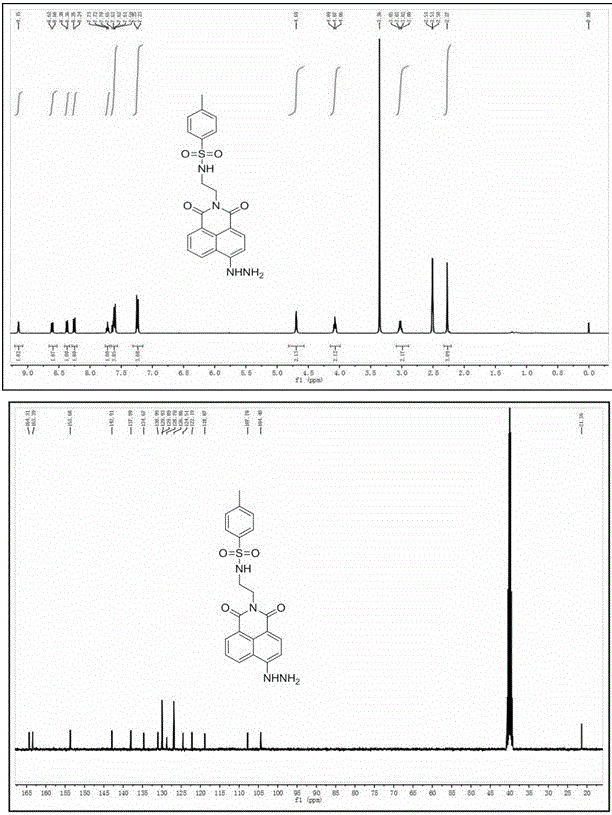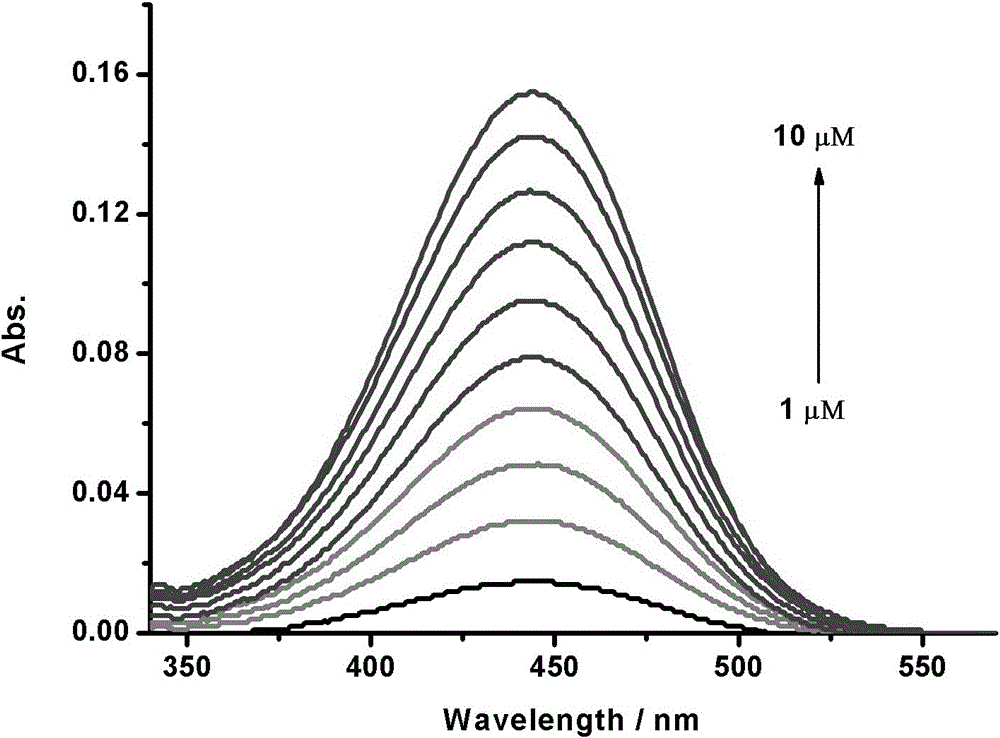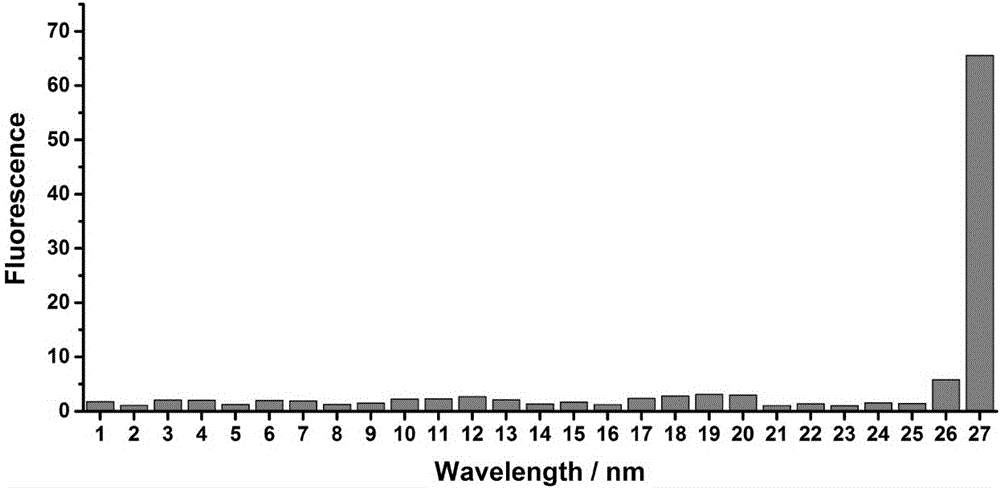Fluorescent probe for detecting formaldehyde in cell endoplasmic reticulums
A fluorescent probe and endoplasmic reticulum technology, applied in the direction of fluorescence/phosphorescence, luminescent materials, measuring devices, etc., can solve problems such as damage, irreparable samples, and inconvenient application
- Summary
- Abstract
- Description
- Claims
- Application Information
AI Technical Summary
Problems solved by technology
Method used
Image
Examples
Embodiment 1
[0032] Synthesis of compound N-(2-aminoethyl)-4-methylsulfonamide (3):
[0033] .
[0034] In a 25 mL round bottom flask, slowly add 1 mmol of p-ethylenediamine (1) to toluene (5 mL) at 40 °C, add 1.0 mmol of p-toluenesulfonyl chloride (2) under the condition of thorough stirring, and heat to reflux for 3 - After 4 h, cool to room temperature, add 5ml of 1M HCl aqueous solution to the reaction, remove the filter residue by suction filtration, neutralize the filtrate with NaOH until a large amount of white solid is precipitated, filter under reduced pressure, and dry the solid in vacuum to obtain solid N - (2-Aminoethyl)-4-methylbenzsulfonamide (3). Yield: 72%. The product was directly subjected to the next reaction without purification.
[0035] Synthesis of compound 4-bromo-N-(2-aminoethyl-4-methylbenzenesulfonamido)naphthalimide (5):
[0036] .
[0037] In a 25 mL round bottom flask, add 0.5 mmol of N-(2-aminoethyl)-4-methylbenzenesulfonamide (3) and 0.5 mmol of 1,8...
Embodiment 2
[0043] Ultraviolet Absorption Experimental Detection of Formaldehyde Fluorescent Probe Na - FA - ER with Concentration Gradient
[0044] Configure PBS buffer solution containing 5% DMSO as the detection mother solution. After debugging the ultraviolet absorption spectrometer, add different concentrations of formaldehyde probe solutions, dilute to 2mL, shake well and perform ultraviolet absorption detection (λ = 600 ~ 200nm ), and established the curves of UV absorption intensity and different concentrations of formaldehyde probes (see figure 2 ). Depend on figure 2 It can be seen that with the increase of the formaldehyde probe concentration, the absorption peak of the curve around λ = 455 nm gradually increases, and the growth trend is relatively uniform.
Embodiment 3
[0046] Selectivity experiment of endoplasmic reticulum formaldehyde fluorescent probe Na - FA - ER to various active small molecules
[0047] Solution preparation: Prepare 10 mL of PBS buffer solution with a concentration of 40 mM aldehydes and ketones, various conventional ions, amino acids, and reactive oxygen and nitrogen substances; prepare 5 mL of a DMSO solution with a concentration of 1 mM for the probe.
[0048] Add 10 μL probe mother solution, 90 μL DMSO, and add PBS solutions of various aldehydes and ketones to make the final concentration reach 40 μM. PBS buffer containing reactive oxygen species to make the final concentration reach 100 μM, dilute to 2 mL with PBS buffer, shake well and detect the fluorescence intensity with a fluorescence spectrophotometer (λ ex = 445 nm, λ em = 543 nm), and then establish the curves of fluorescence intensity and different particles (aldehydes and ketones, amino acids, conventional anions and cations, and active oxygen and nitr...
PUM
 Login to View More
Login to View More Abstract
Description
Claims
Application Information
 Login to View More
Login to View More - R&D
- Intellectual Property
- Life Sciences
- Materials
- Tech Scout
- Unparalleled Data Quality
- Higher Quality Content
- 60% Fewer Hallucinations
Browse by: Latest US Patents, China's latest patents, Technical Efficacy Thesaurus, Application Domain, Technology Topic, Popular Technical Reports.
© 2025 PatSnap. All rights reserved.Legal|Privacy policy|Modern Slavery Act Transparency Statement|Sitemap|About US| Contact US: help@patsnap.com



